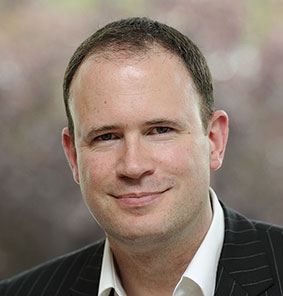In-house teams may have grown in size and stature over recent years, but their external adviser panels are definitely shrinking. As a result, law firms find themselves increasingly at the sharp end during adviser reviews (see box ‘Cutting back’, below), with clients pushing for better rates, greater efficiencies and added extras.
A private function
Unlike their private practice counterparts, in-house private equity (PE) lawyers prefer a low profile. Or, as one private practice partner puts it: ‘PE is a murky, sharp-elbowed world. In-house lawyers like to stay out of the limelight.’ Continue reading “A private function”
Northern Lights
The professional life of a public company general counsel in Scotland can feel isolated at times. As a member of a small club, opportunities to plug into the professional networks that their peers in the South East of England take for granted can be limited. ‘We do get a sense sometimes that we are a decreasing community!’ confesses Christopher Morgan, GC and company secretary at Glasgow-based engineering plc Weir Group. ‘Certainly the number of Scottish-based plc GCs is thin on the ground and
it’s dwindling.’
The shortlist: 15 of Scotland’s leading in-house lawyers discuss their roles
To highlight the strength of Scotland’s GC community, The In-House Lawyer profiles some of the nation’s leading buy-side lawyers.
Continue reading “The shortlist: 15 of Scotland’s leading in-house lawyers discuss their roles”
The USP
In 1994, a young South African lawyer named Kevin Gold was sitting in his office at central London practice Bayer Rosin flipping a coin to decide the future of the firm he ran. ‘Heads or tails… Olswang or SJ Berwin…’ A third, lesser-known firm was also at the back of his mind: Mishcon de Reya. It was no coincidence the three firms were vying for Bayer’s hand. Formed in 1985 and specialising in litigation, corporate, private client and real estate work, the nine-partner firm was a highly profitable little outfit with revenues of £9m and strong ties to lucrative South African business.
The new judges
In our recent Insight report on business and human rights – published in September in association with Herbert Smith Freehills – we noted how the arrival of the Modern Slavery Act (MSA) in the UK in 2015 has crystallised awareness of the human rights concerns in business. We heard from in-house human rights experts how the debate over the last 15 years had moved beyond a vague concept to which lip service had been paid to become a mainstream business consideration, combining legal liability with potentially devastating reputational risk.
On the menu
Alison Gaskins’ remit on joining Barclays’ legal department was formidable. Group general counsel Bob Hoyt told her in no uncertain terms: ‘I want to be able to have a conversation with my CEO which clearly states what the legal department is doing for its internal customers, including what it costs and why it costs what it does.’ A former management consultant with over ten years’ experience in COO and change management roles at Barclays, even Gaskins was initially daunted by the scope of this request. But it became clear that by understanding the underlying economics of Barclays’ legal department and how they can be influenced, it would be possible to revolutionise how legal services were delivered to the business. The process has to date covered five interlinked aspects: matter management, e-billing, the law firm panel, lawyer time recording and management information (MI).
Beyond Boundaries
Collaboration has, admittedly, become something of a buzzword in the legal profession these days. But all signs suggest that it is far more than a passing fad. Throughout the legal world, as in most knowledge-based industries, two trends are crashing together. On the one hand, vast increases in knowledge are forcing professionals to specialise, whether by discipline, geography or problem class. On the other hand, vast increases in the complexity of today’s problems call for those specialists to collaborate across disciplinary and organisational boundaries to tackle those sophisticated issues. In short, the tension between these two trends is what produces the need for effective collaboration.
The picture of risk
The multi-faceted nature of risk makes it a complex subject to manage. Formal structures and a pro-active approach can support both the handling of effective risk management and mitigation, as well as a crisis. The general counsel has an important part to play at all stages. Having an effective relationship with the business, as well as experience in areas such as M&A, health and safety, competition, compliance, regulatory and reputation management (to name but a few), can see the GC as ringmaster. However, wherever the GC is not seen as core to the organisation, they will be trying to defend the organisation from the sidelines. Continue reading “The picture of risk”
Electric cars – finally powering up
The market for electric vehicles (EVs) has not yet taken off, but this could be about to change. The ratification of the Paris Agreement means that many countries now need to reduce their emissions and in the UK we also need to reduce our reliance on fossil fuels, particularly in the transport sector, to meet our Climate Change Act 2008 targets.
Not yet cleared for landing – many hurdles ahead for Heathrow expansion
It is trite to say that large infrastructure projects are complex and their development requires activity at the point at which commerce, regulation and policy converge. But there are projects of such magnitude that they may require extraordinary measures in each arena to deliver. Recognition of this has led to a variety of measures, usually involving new law, designed to facilitate them.
Continue reading “Not yet cleared for landing – many hurdles ahead for Heathrow expansion”
The promised march of the builders – mind that rhetorical gap
What do president Donald Trump, chancellor Philip Hammond and premier Li Keqiang all have in common? The answer does not relate to hairstyles but infrastructure – all have highlighted enhanced national infrastructure as key to bolstering their economies against the threat of slowing global growth. And they are not alone – the Word Economic Forum estimates the shortfall in global infrastructure investment to be at least $1trn per year. Continue reading “The promised march of the builders – mind that rhetorical gap”













